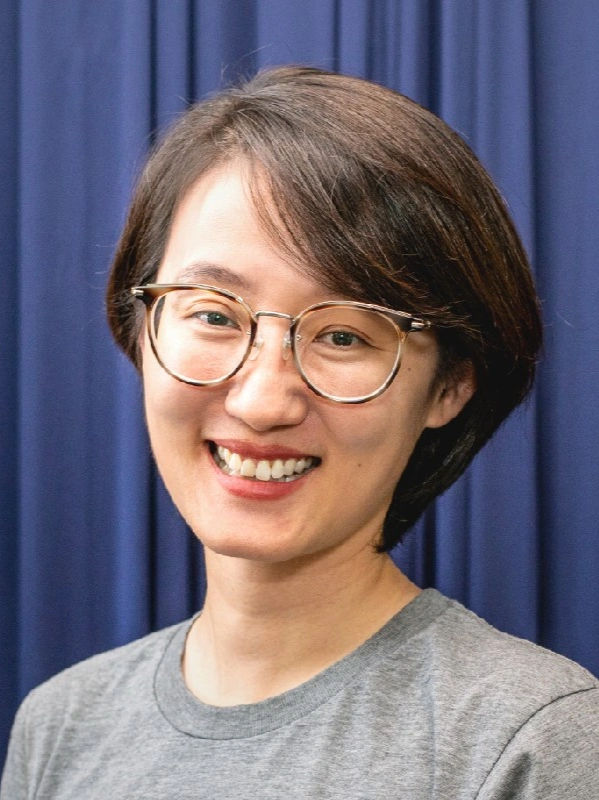Unlocking Hidden AI Talent: Beyond Traditional Recruitment Approaches
- Jonathan H. Westover, PhD
- Sep 11
- 7 min read
Abstract: This study examines the "hidden AI talent pipeline" - professionals with substantial AI capabilities who don't hold traditional AI job titles. Analysis of over 3 million professional profiles reveals this hidden talent pool is approximately 20 times larger than the traditional AI workforce. The paper identifies key universities producing this talent, examines geographic distribution patterns, and discusses significant salary differentials across regions. It presents three practical strategies for organizations to tap into this overlooked talent: shifting to skills-based talent identification, recalibrating university partnerships, and developing internal AI capabilities. Case studies from JPMorgan Chase, Google, and Walmart demonstrate how these approaches reduce recruitment costs, accelerate AI implementation, and build more diverse AI capabilities, offering organizations a competitive advantage in the AI talent landscape.
In today's AI-driven business landscape, organizations are locked in an increasingly competitive battle for artificial intelligence talent. As demand for AI capabilities grows exponentially, many companies report significant challenges filling specialized roles, with recruitment timelines stretching to months and salary expectations soaring. However, our research reveals that the perceived AI talent shortage may be largely self-inflicted – the result of overly narrow recruitment approaches that overlook a vast pool of capable professionals.
Methodology
This analysis identified AI-capable professionals using GrauntX's multi-signal framework applied to over 3 million professional profiles. Individuals were classified through two distinct approaches:
For the traditional AI talent pipeline, we identified professionals with explicitly AI/ML-labeled job titles (e.g., Machine Learning Engineer, AI Research Scientist, NLP Engineer).
For the hidden AI talent pipeline, we identified professionals with conventional job titles but strong AI/ML signals, including technical skills (Python, PyTorch, TensorFlow), project descriptions referencing production AI deployment, and relevant educational backgrounds.
Our analysis included professionals across all career stages, with university affiliations assigned based on their most recent degree institution. This approach allowed us to surface both the visible segment of AI-titled professionals and the substantially larger hidden segment of professionals contributing to applied AI work without AI-specific job titles. Methodology validation through spot checks and signal consistency analysis confirms that results reflect meaningful patterns in the global AI talent landscape.
The Hidden AI Talent Pipeline
Our analysis of more than 3 million professional profiles reveals a startling reality: the pool of professionals with substantial AI capabilities is approximately 20 times larger than those with explicit AI job titles. While roughly 99,800 professionals hold designated AI positions, more than 1.1 million individuals possess machine learning skills they apply in various technical roles.
Table 1: Scale Comparison of AI Talent Pools
Metric | Hidden Pipeline | Traditional Pipeline | Ratio |
Total Professionals | ~3.1 million | ~99,800 | 31:1 |
With Machine Learning Skills | 1,111,947 | 54,492 | 20:1 |
With Deep Learning Skills | 462,642 | 50,114 | 9:1 |
With AI-related Skills | 319,656 | 26,470 | 12:1 |
This "hidden AI talent pipeline" consists of professionals with strong AI skills who don't hold traditional AI job titles. These individuals often have backgrounds in computer science, engineering, or quantitative fields and have developed AI competencies through formal education, self-directed learning, or on-the-job experience.
Why does this hidden pipeline exist?
Technical Evolution: Software engineering and data science roles increasingly incorporate AI components, blurring boundaries between traditional development and AI specialization.
Organizational Structure: Many companies integrate AI capabilities within existing technical teams rather than creating dedicated AI departments.
Educational Pathways: Universities often embed AI concepts across their computer science curriculum rather than solely in specialized AI programs.
Key Universities Producing Hidden AI Talent
Our research identifies universities that excel at producing graduates with AI capabilities who work across diverse roles. While traditional AI powerhouses like Carnegie Mellon, Stanford, and Berkeley remain prominent, several institutions stand out for producing disproportionately large numbers of “hidden” AI talent:
Table 2: Universities with Highest Hidden-to-Traditional AI Talent Ratios
University | Hidden Pipeline | Traditional Pipeline | Ratio |
Jawaharlal Nehru Technological University | 23,789 | 445 | 53:1 |
University of Mumbai | 16,738 | 475 | 35:1 |
Arizona State University | 14,553 | 450 | 32:1 |
Savitribai Phule Pune University | 15,671 | 554 | 28:1 |
University of Waterloo | 14,424 | 663 | 22:1 |
These institutions typically integrate AI concepts throughout their technical curricula rather than isolating them in specialized programs, producing graduates who apply AI skills across diverse roles.
Geographic Distribution and Compensation
The geographic distribution of AI talent reveals interesting patterns. While traditional AI specialists concentrate in technology hubs like San Francisco, Seattle, and New York, hidden AI talent is more widely distributed with significant concentrations in regions like India (Bengaluru, Pune, Hyderabad), Europe, and emerging technology centers.
Table 3: Geographic Distribution and Compensation
Location | Hidden Pipeline Count | Traditional Pipeline Count | Hidden Pipeline Avg. Salary (USD) | Traditional Pipeline Avg. Salary (USD) |
Bengaluru | 122,820 | 3,981 | $13K-24K | $12K-23K |
New York | 58,086 | 2,686 | $149K-276K | $158K-294K |
Pune | 50,017 | 1,158 | $8K-15K | $6K-12K |
Seattle | 40,455 | 1,937 | $179K-333K | $195K-362K |
San Francisco | 30,031 | 1,441 | $189K-351K | $197K-366K |
Salary differentials are dramatic across regions. In San Francisco, professionals in the hidden AI pipeline earn between 189,000−351,000, while their counterparts in Bengaluru earn 13,000−24,000 despite possessing comparable technical skills. This creates both challenges and opportunities for global talent acquisition strategies.
Business Impact of Recognizing Hidden AI Talent
Organizations that tap into the hidden AI talent pipeline gain significant advantages:
Reduced Recruitment Costs: Companies focusing exclusively on traditional AI specialists face extended hiring timelines. Research from Gartner shows 69% of HR leaders report difficulty filling specialized AI roles, leading to productivity losses and increased recruitment costs.
Accelerated Implementation: According to Deloitte, organizations that effectively integrate AI talent across functional teams achieve 35% higher rates of AI production deployment compared to those relying exclusively on specialized AI teams.
Greater Innovation Diversity: MIT Sloan Management Review research indicates that organizations with cross-functional AI teams including members from diverse backgrounds identify 31% more potential AI use cases compared to homogeneous AI teams.
Practical Strategies for Accessing Hidden AI Talent
1. Shift to Skills-Based Talent Identification
Move beyond credential-based hiring to skills-based evaluation:
Implement practical, project-based assessments that evaluate AI capabilities regardless of formal credentials
Evaluate candidates based on demonstrated work rather than job titles or educational pedigree
Use skills data to identify hidden AI talent within your existing workforce
JPMorgan Chase implemented a "Skills Passport" program that identifies and certifies AI capabilities across its 250,000-person workforce. The program uncovered more than 3,000 employees with advanced AI skills working in non-AI-titled positions, creating an internal talent pipeline that filled 60% of the firm's AI specialist openings. This reduced average hiring time from 110 to 45 days and decreased external recruitment costs by 35%.
2. Recalibrate University Partnerships
Develop strategic relationships with universities producing high volumes of hidden AI talent:
Partner with institutions demonstrating high ratios of hidden-to-traditional AI talent
Co-develop curricula that integrate applied AI components into broader technical programs
Establish mentorship relationships between your AI practitioners and students in adjacent technical fields
Table 4: Skills Profile Comparison
Hidden Pipeline Distinctive Skills | Traditional Pipeline Distinctive Skills |
Full-stack development capabilities | Deep learning specialization |
DevOps expertise | Large Language Models (LLM) experience |
Cloud platform proficiency | Computer vision expertise |
Production deployment experience | Research publication experience |
Google transformed its university recruitment after analyzing its most successful AI teams. The company discovered many top performers came from universities with strong foundational technical programs rather than specialized AI research institutions. Google established dedicated recruitment channels with Georgia Tech, University of Waterloo, and Jawaharlal Nehru Technological University, developing technical assessments that evaluate fundamental capabilities correlated with AI aptitude. This increased their technical talent pool by 45% and improved six-month performance ratings for new hires by 22%.
3. Develop Internal AI Capabilities
Invest in developing AI capabilities within your existing technical workforce:
Create structured opportunities for software engineers and data analysts to develop AI skills through actual projects
Establish rotational assignments that expose technical talent to AI applications
Develop internal certification processes that formally recognize AI capabilities developed on the job
Table 5: Top Companies by AI Talent Employment
Company | Hidden Pipeline | Traditional Pipeline | Ratio |
47,916 | 830 | 58:1 | |
Amazon | 40,280 | 3,912 | 10:1 |
Microsoft | 38,545 | 2,102 | 18:1 |
Meta | 24,702 | 2,027 | 12:1 |
Tata Consultancy Services | 24,663 | 397 | 62:1 |
Walmart created a "Technical Fellows" program identifying software engineers, data scientists, and business analysts with aptitude for AI development. Participants maintain their current roles while dedicating 20% of their time to AI project work under experienced mentors. The program has produced over 500 AI-capable professionals with 92% remaining at the company at least two years after completion—significantly higher than the 60% retention rate for externally hired AI specialists. Projects led by program graduates have generated an estimated $380 million in operational savings and revenue enhancements.
Building for the Future
The conventional understanding of the AI talent landscape significantly underestimates the available pool of AI-capable professionals. By recognizing and tapping into the hidden AI talent pipeline, organizations can dramatically expand their access to needed capabilities.
For organizations seeking to build AI capabilities, our evidence suggests three primary strategies:
Shift from credential-based to skill-based talent identification
Recalibrate university partnerships to target institutions producing hidden AI talent
Invest in developing AI capabilities within existing technical workforces
By embracing these approaches, organizations can overcome perceived AI talent shortages, reduce recruitment costs, accelerate AI implementation, and build more robust, diverse AI capabilities. In the rapidly evolving AI landscape, those who can effectively identify and develop talent across traditional boundaries will gain a significant competitive advantage.

Jonathan H. Westover, PhD is Chief Academic & Learning Officer (HCI Academy); Associate Dean and Director of HR Programs (WGU); Professor, Organizational Leadership (UVU); OD/HR/Leadership Consultant (Human Capital Innovations). Read Jonathan Westover's executive profile here.

Fei Tang is the Founder of GrauntX.ai and a serial entrepreneur with extensive experience in talent analytics, HR technology, and AI innovation. She has led data and people strategy initiatives across global organizations, focusing on bridging labor market research with practical business applications. Fei is passionate about uncovering early signals of organizational and talent shifts to help leaders make smarter decisions. She can be reached at feitang@grauntx.ai.
GrauntX.ai is an AI-powered workforce intelligence platform that transforms public labor market signals into actionable insights. By analyzing hiring trends, leadership moves, and organizational changes across industries, GrauntX helps HR leaders, people analysts, investors, and founders identify emerging opportunities and risks earlier than traditional sources. Founded in 2025, GrauntX is committed to making high-quality labor market intelligence more accessible and cost-effective. Learn more at www.grauntx.ai.
Suggested Citation: Westover, J. H. and Tang, F. (2025). Unlocking Hidden AI Talent: Beyond Traditional Recruitment Approaches. Human Capital Leadership Review, 25(2). doi.org/10.70175/hclreview.2020.25.2.9

















